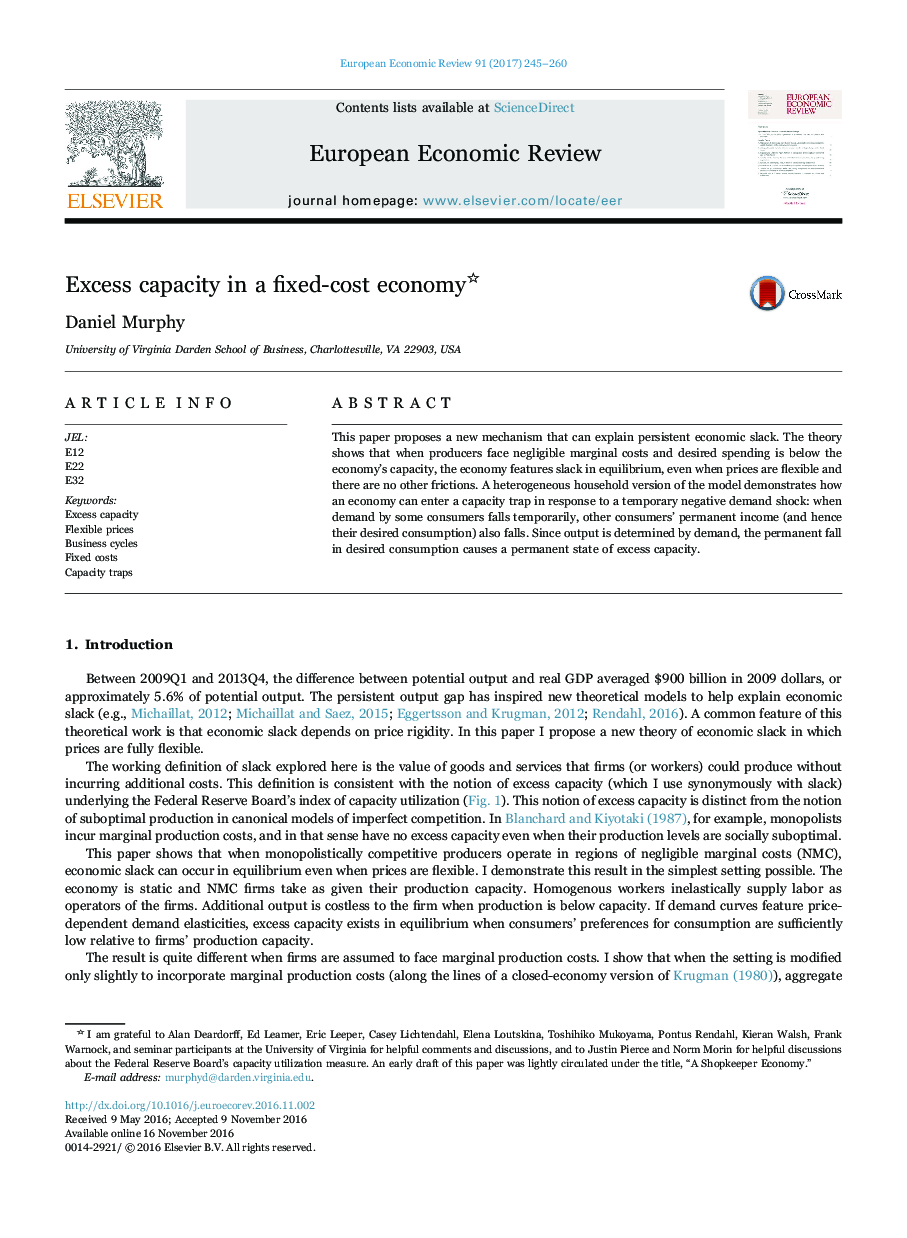| Article ID | Journal | Published Year | Pages | File Type |
|---|---|---|---|---|
| 5066360 | European Economic Review | 2017 | 16 Pages |
Abstract
This paper proposes a new mechanism that can explain persistent economic slack. The theory shows that when producers face negligible marginal costs and desired spending is below the economy's capacity, the economy features slack in equilibrium, even when prices are flexible and there are no other frictions. A heterogeneous household version of the model demonstrates how an economy can enter a capacity trap in response to a temporary negative demand shock: when demand by some consumers falls temporarily, other consumers' permanent income (and hence their desired consumption) also falls. Since output is determined by demand, the permanent fall in desired consumption causes a permanent state of excess capacity.
Related Topics
Social Sciences and Humanities
Economics, Econometrics and Finance
Economics and Econometrics
Authors
Daniel Murphy,
